Below is a selection of projects showcasing my work in research, design, and front-end development at the NJ State Government. I implemented modern web applications for internal and external systems, replacing legacy tools and improving processes. My work included user research to guide architecture and design decisions, ensuring each solution met user needs and business objectives.
Designed to streamline access to programs, benefits, and resources, the Hub enables caregivers to easily understand available services, apply for assistance, and manage both their own and their care recipient’s needs in one place. Building upon existing systems and leveraging integrations with Salesforce, AWS, and Monami, the project focuses on modernizing legacy processes, enhancing accessibility, and providing a cohesive brand and user experience under the NJ.gov ecosystem. The initiative represents a collaborative effort between DoAS leadership, design and development teams, and external partners—aimed at empowering caregivers through intuitive digital tools, personalized assessments, and ongoing support.
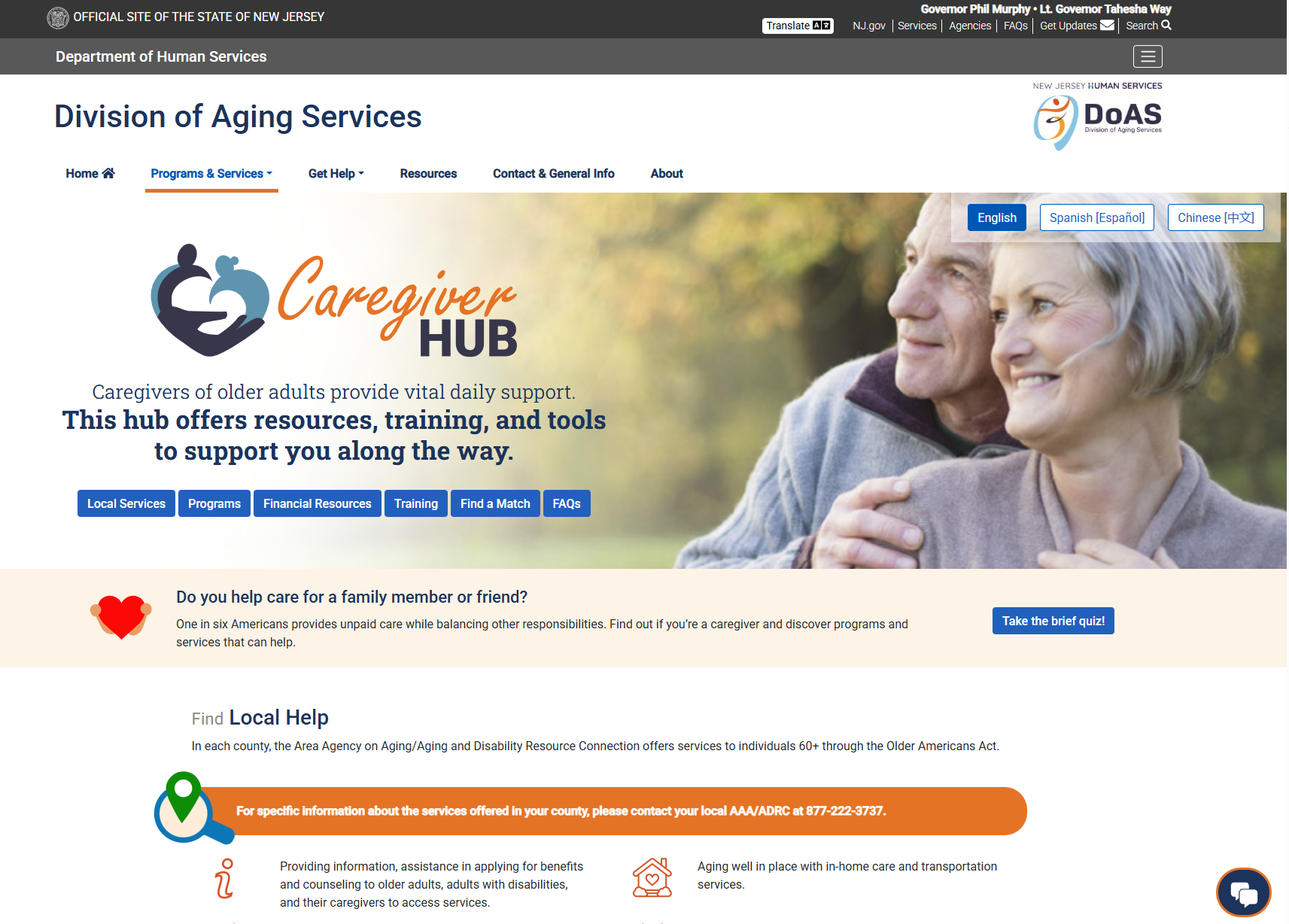
Main banner on the new site. Designed Logo using existing color options, fonts and guidelines.

Designed and programmed a quick quiz for users to determine whether they are considered a caregiver or not.
RAPID is a unified, AI-powered platform developed to replace a complex network of fragmented systems—including ImageTrust, Salesforce, Trex, and manual scanning processes—with one secure, cloud-based solution. Designed and supported entirely in-house, the platform centralizes document management, compliance, and client engagement within a single, searchable environment. Features such as address and phone validation, integrated communications, and profile-based client organization create a seamless “no wrong door” experience, ensuring residents and clients receive consistent service across all divisions. By streamlining workflows, automating tasks, and providing real-time data insights, RAPID enhances efficiency, compliance, and collaboration—ultimately reducing costs and establishing a scalable foundation for ongoing innovation and cross-division growth.
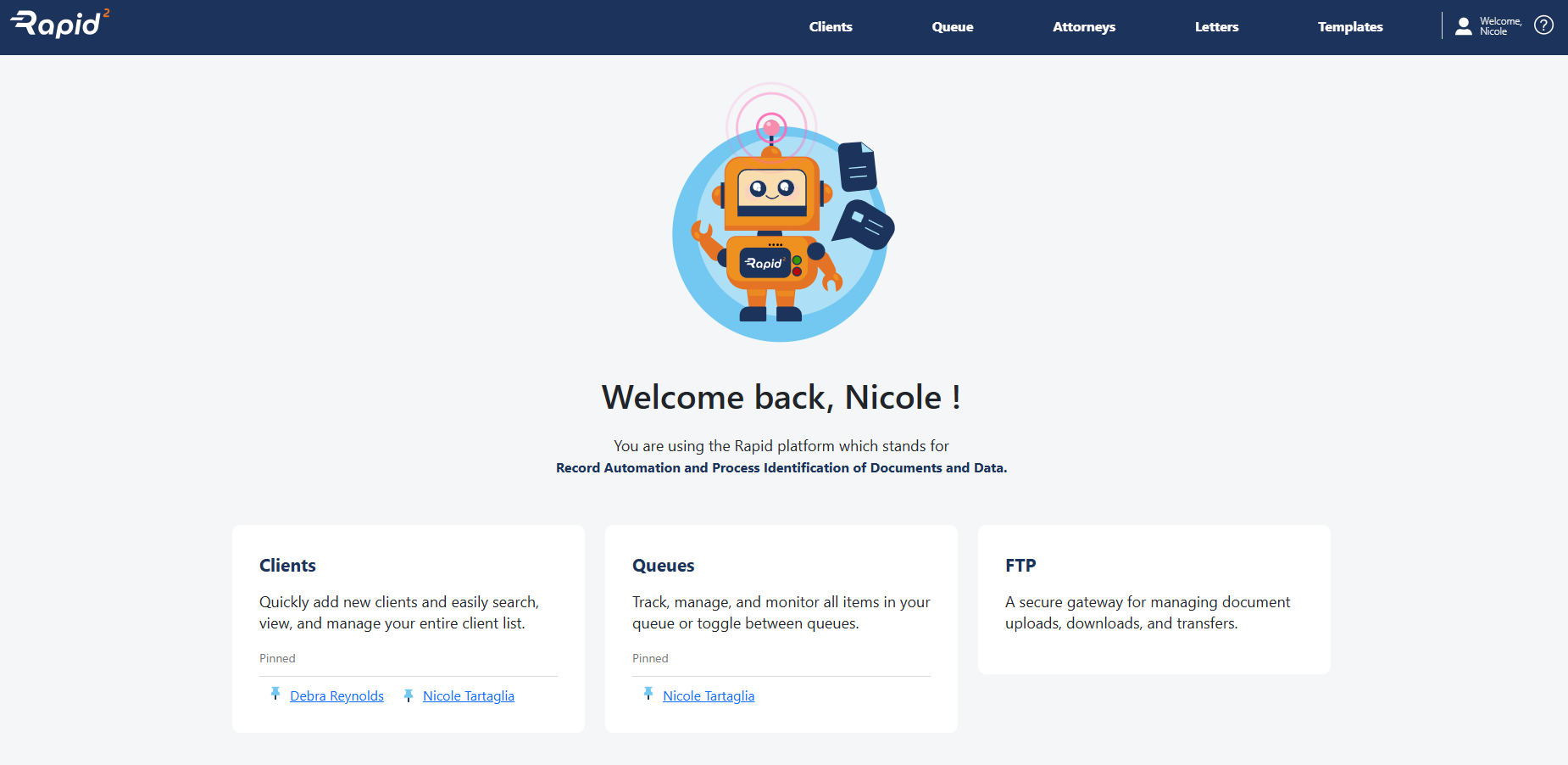



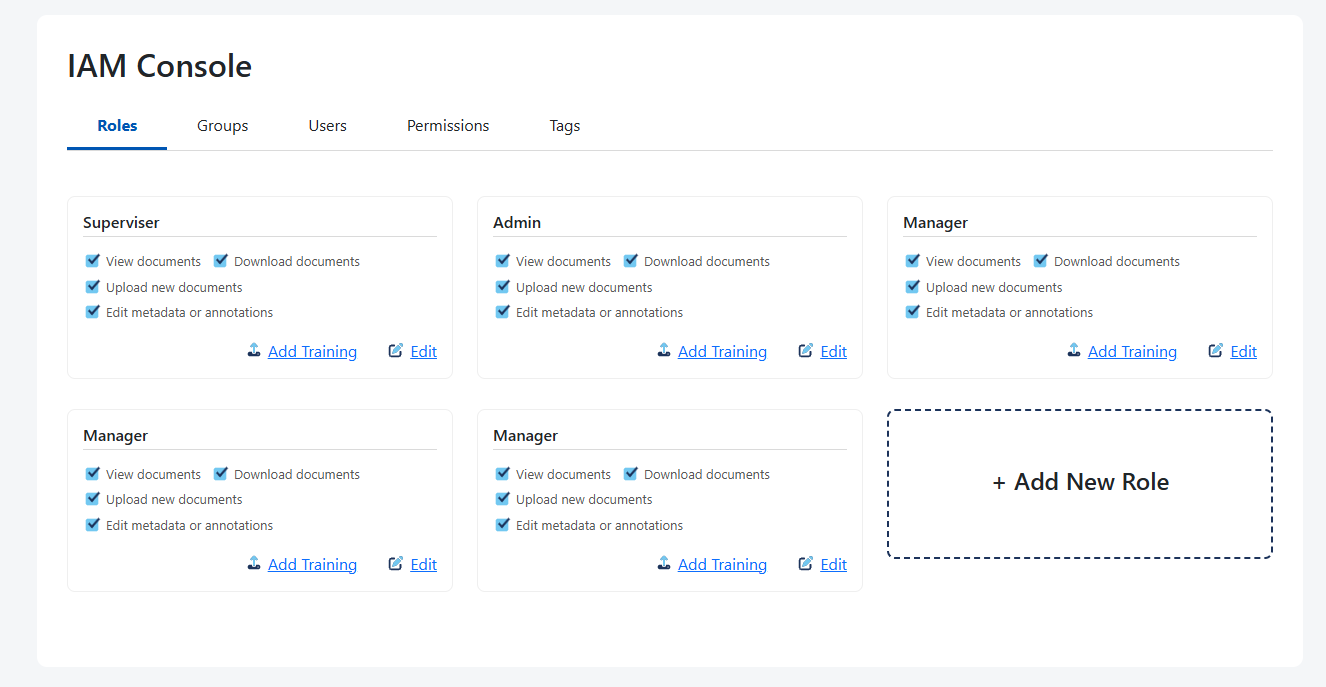


Redesigned the Adult Protective Services landing page to enhance accessibility, SEO, and overall user experience. The updated design features a county look-up tool to connect residents with local offices and an online reporting form that allows users to report suspected abuse or neglect anonymously.

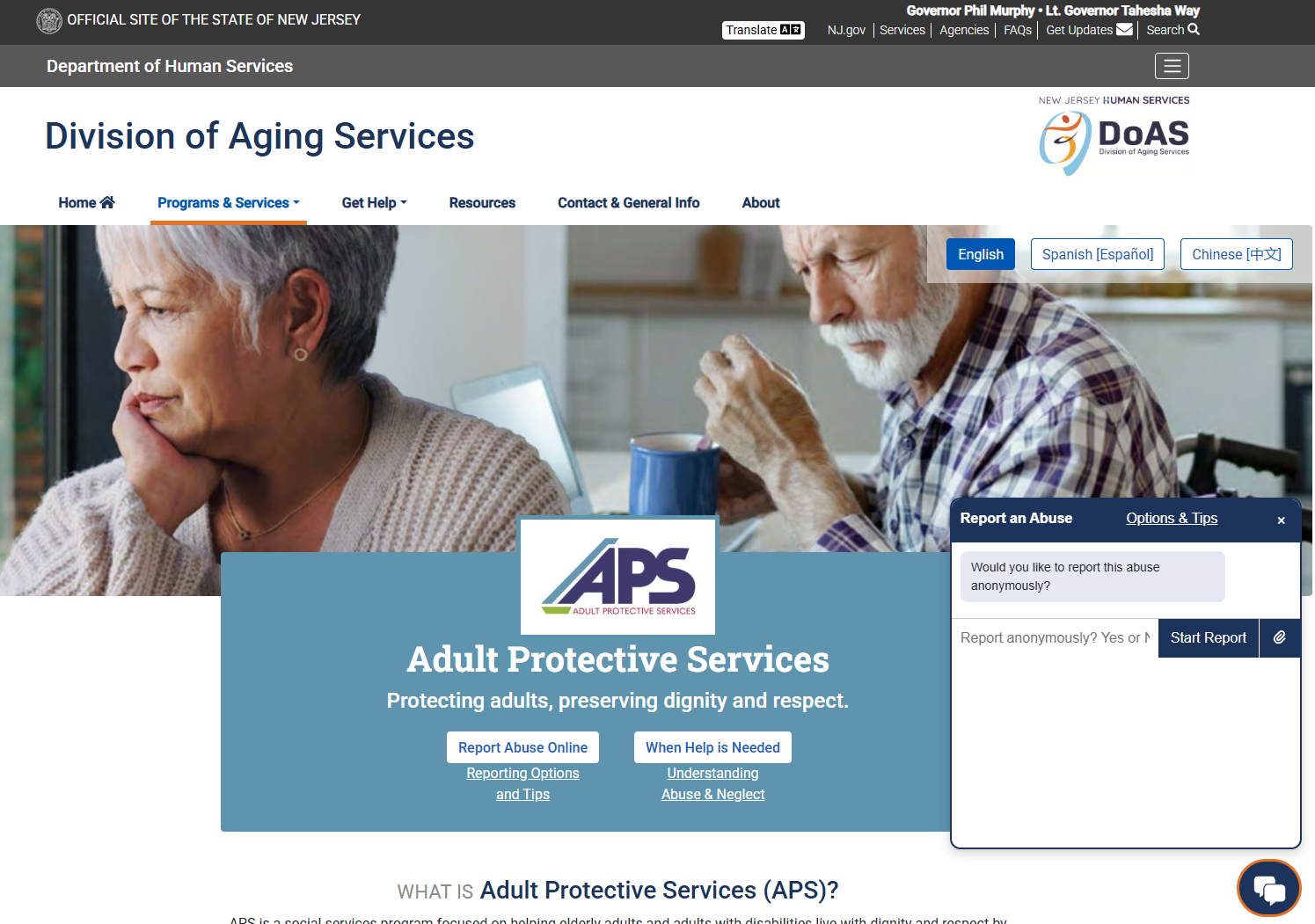
An e-commerce website with over 45,000 products and translated into 12 language sites, I lead a team (for over 10 years) in charge of the UI/UX, design system creation and maintenance, marketing on the website, CSS, JS, and responsive mobile site. This included a resource center with 1,000s of articles and event/webinar pages.
View a few examples of UX and UI case studies below on specific projects.
Built, managed and worked with a product design team of 4. Worked with 4 content creators and engineers.
Developed and led the design and front-end code.
User research, prototyping, UI design
View Case Study
Imaging Optics Division, Manufacturing | Edmund Optics
This is a 5-page, content-rich website for the Imaging Optics division of Edmund Optics, focused on attracting high-volume contracts in high-tech industries such as space, factory automation, autonomous driving, life sciences, and more.
View Website

Laser Optics Division, Manufacturing | Edmund Optics
This is a 5-page, content-rich website for the Imaging Optics division of Edmund Optics, focused on attracting high-volume contracts in high-tech industries such as biomedical lasers, materials processing, security, communications, and defense systems.
View Website

Optical Filters Division, Manufacturing | Edmund Optics
This is a 5-page, content-rich website for the Imaging Optics division of Edmund Optics, focused on attracting high-volume contracts in high-tech industries such as medical diagnostics and devices, agriculture, food and beverage, and environmental.
View Website

Precision Optics Division, Manufacturing | Edmund Optics
This is a 5-page, content-rich website for the Imaging Optics division of Edmund Optics, focused on attracting high-volume contracts in high-tech industries such as life sciences and medical devices, industrial inspection, research and university, and defense and security.
View Website
The old resource section was a series of unsorted lists across multiple pages. The new version was rebranded as a 'Knowledge Center' and showcases an all-in-one approach, allowing customers to filter and sort based on their needs in one location.
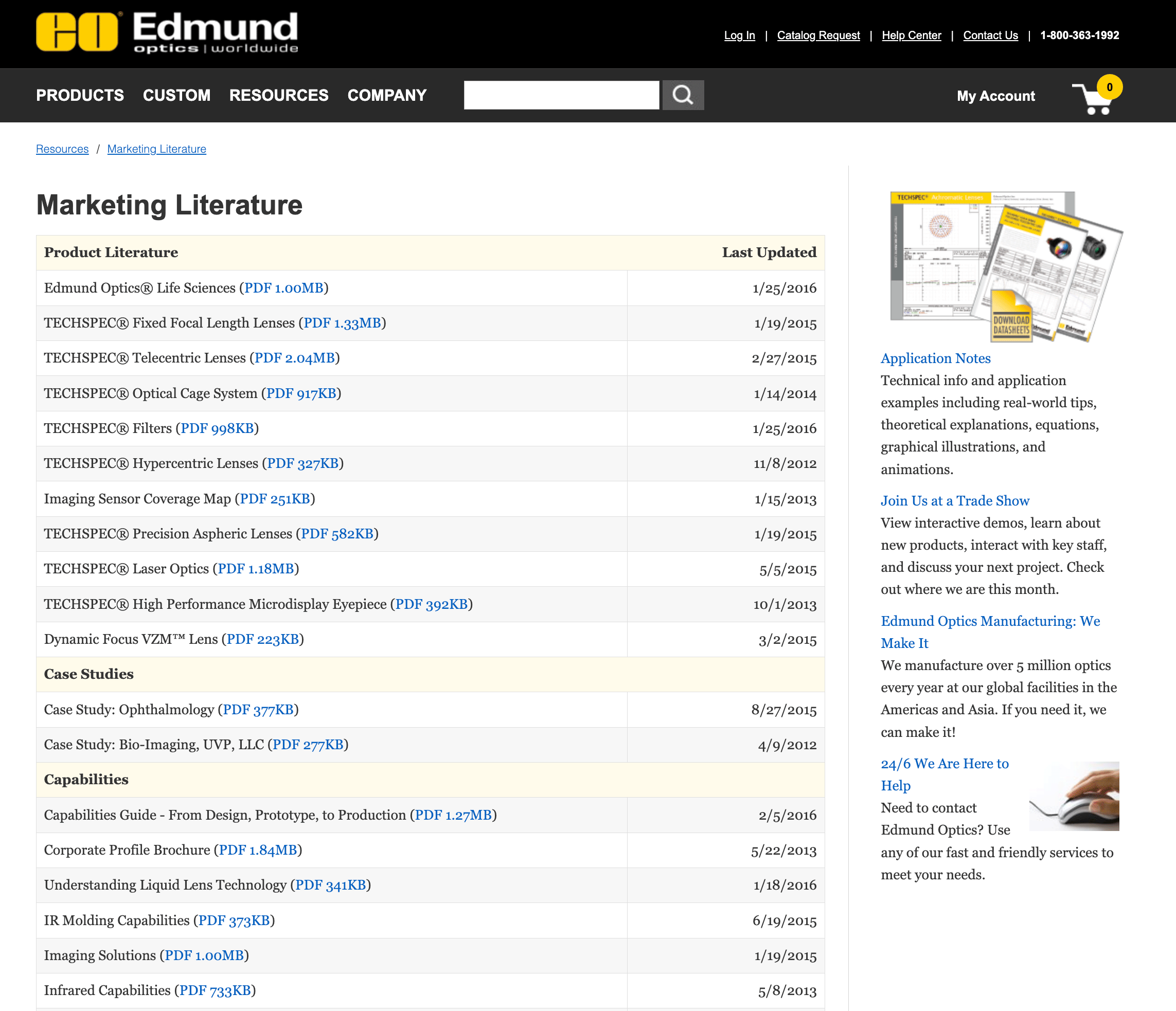
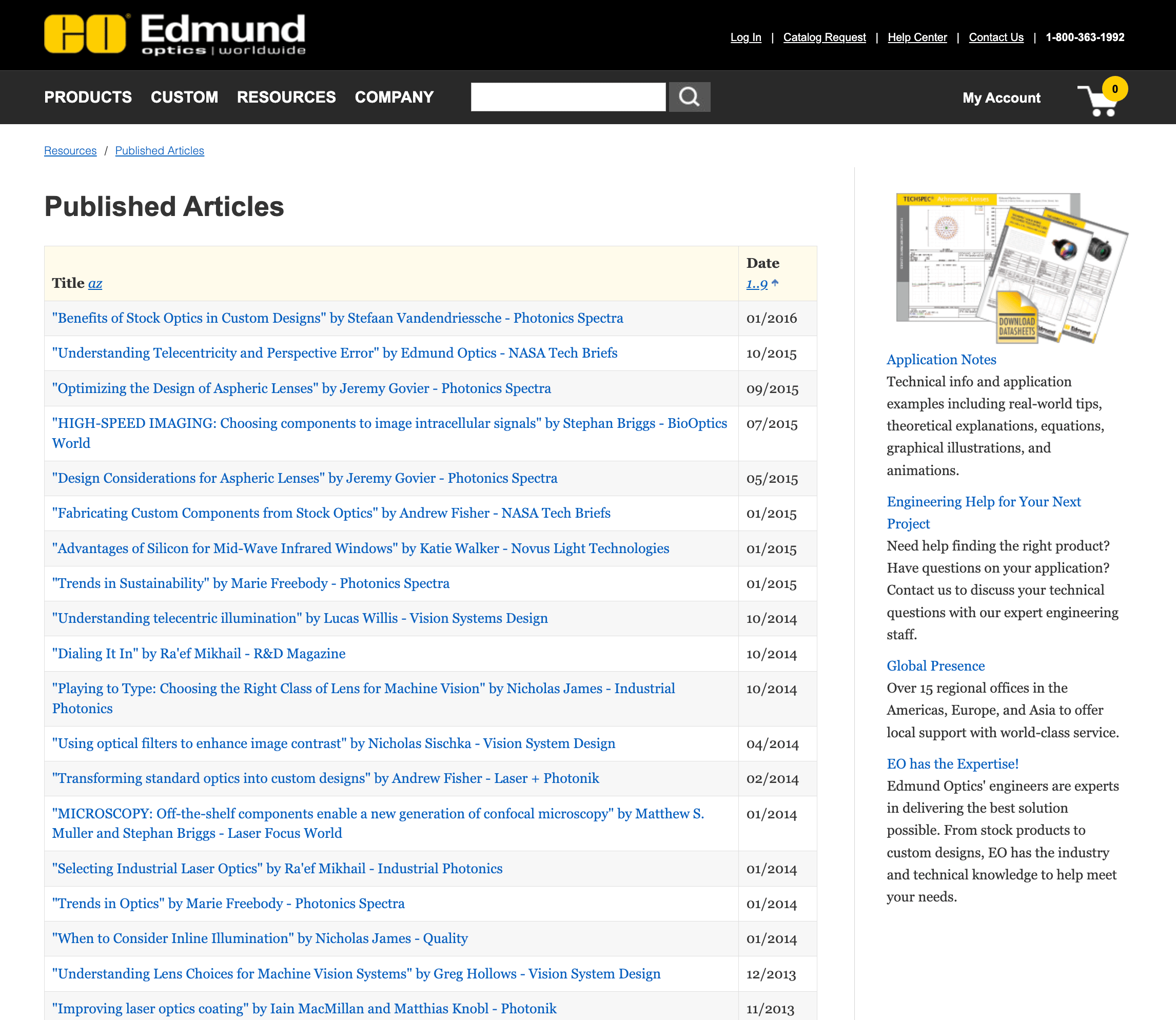
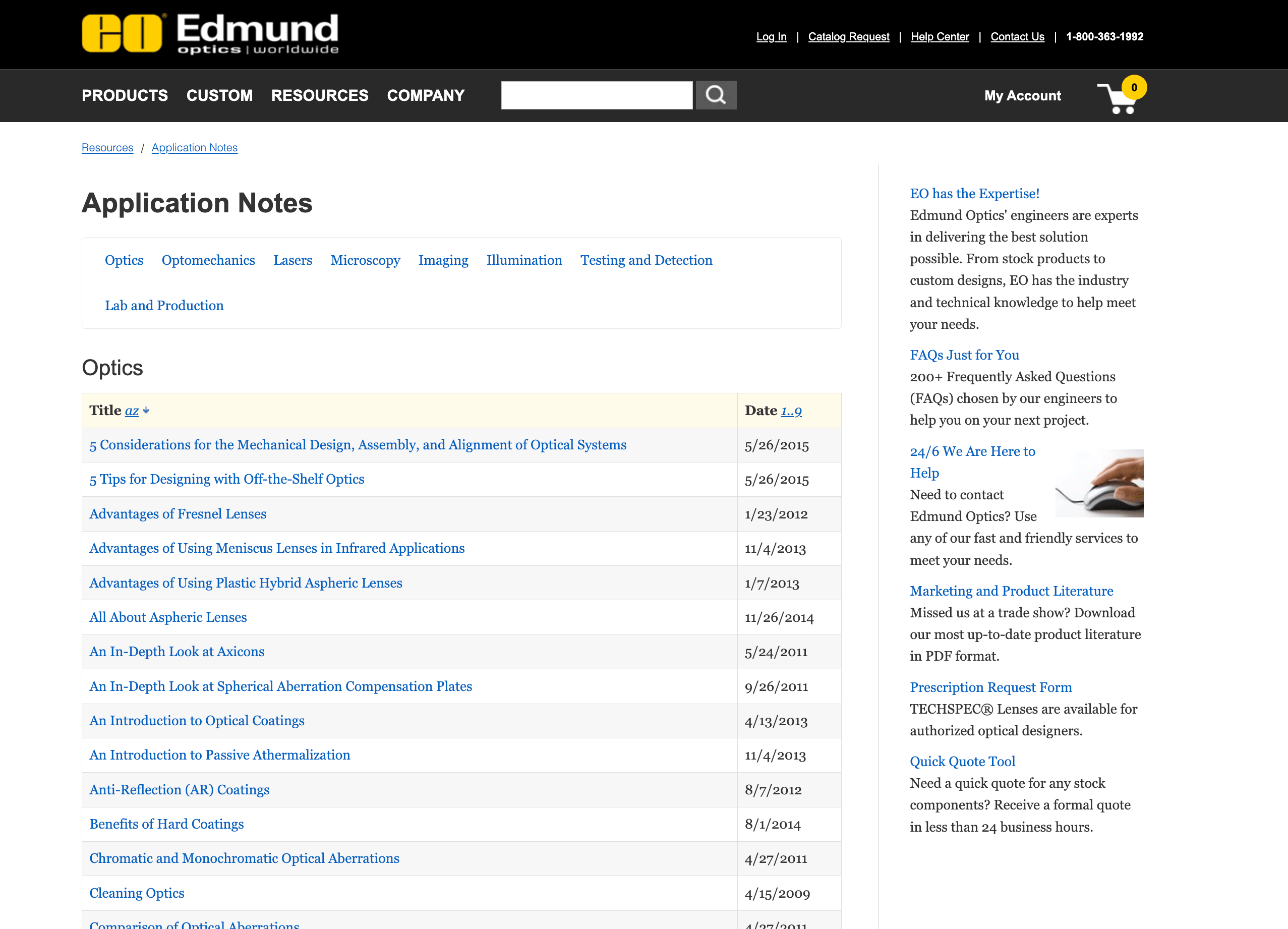
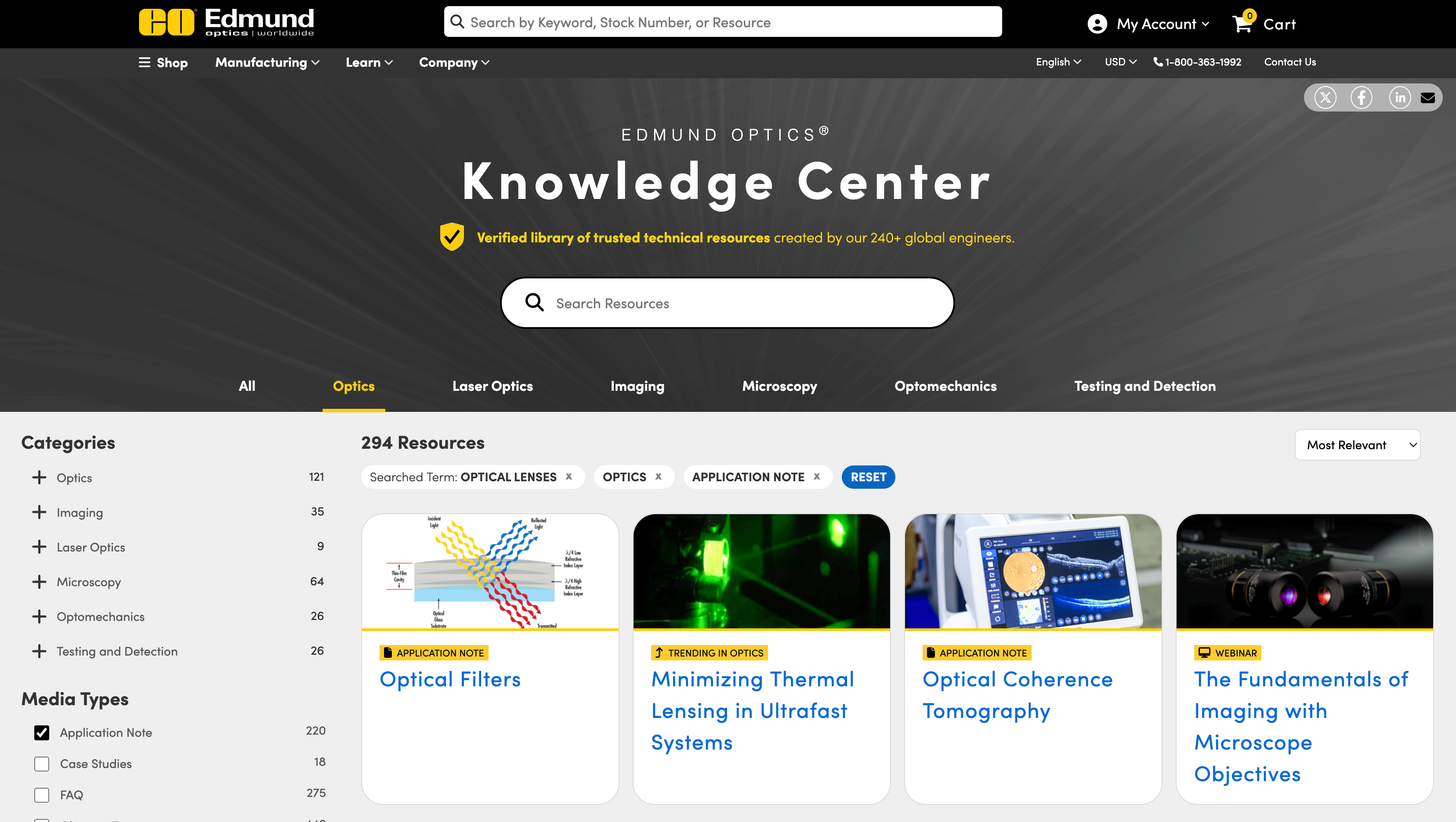
In a funnel analysis, we noticed a drop-off by users trying to edit their address books. Upon reviewing the procedure flow, we found that customers editing their address book were sent to the 'My Account' section of the website. There, they could edit, add, or change their address, but at that point, they had left the cart, resulting in a significant drop-off and cart abandonment. We revised the process so that editing, changing, or adding an address no longer required going into the 'My Account' section; instead, it was moved to a pop-up directly within the cart.
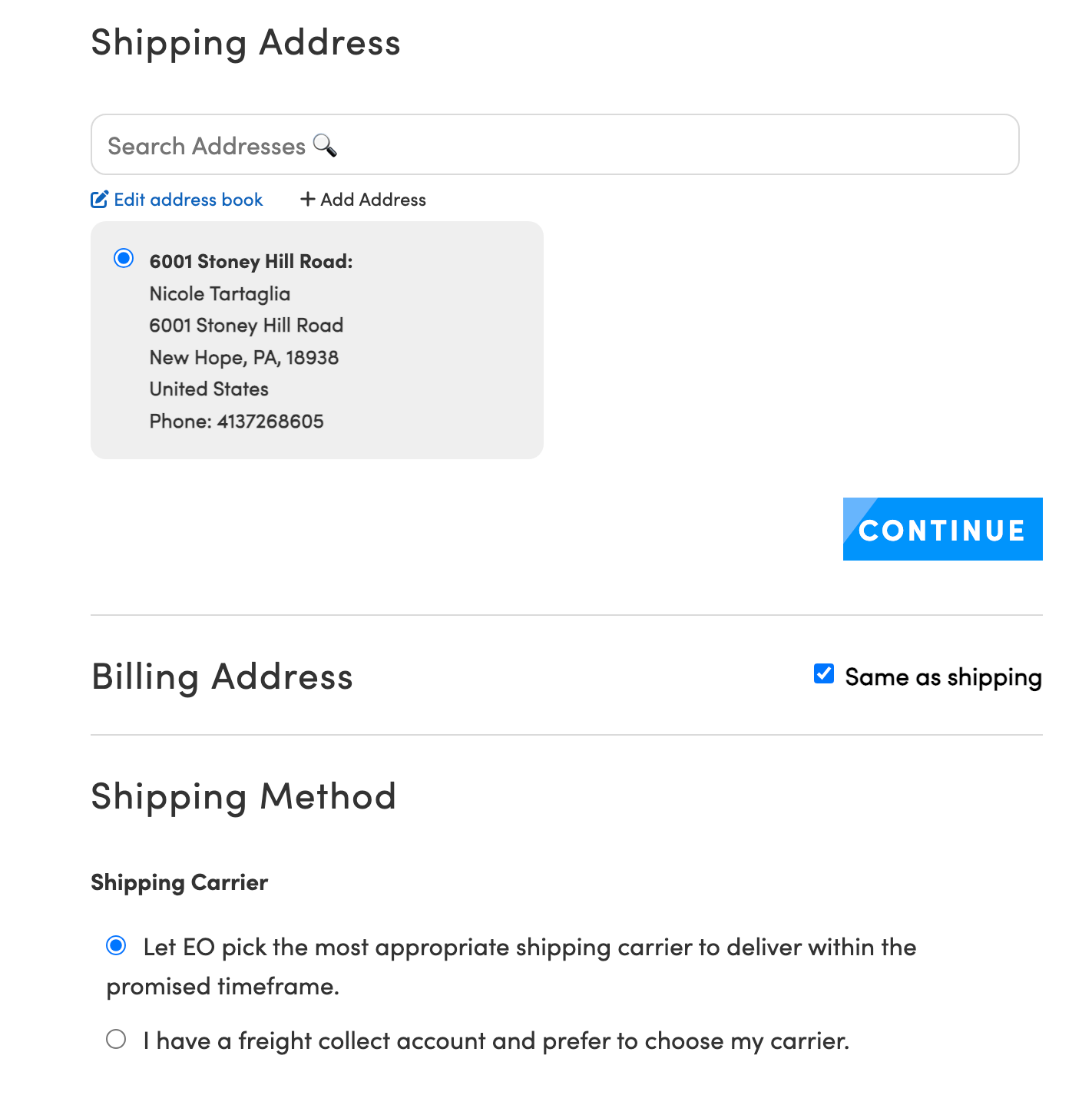
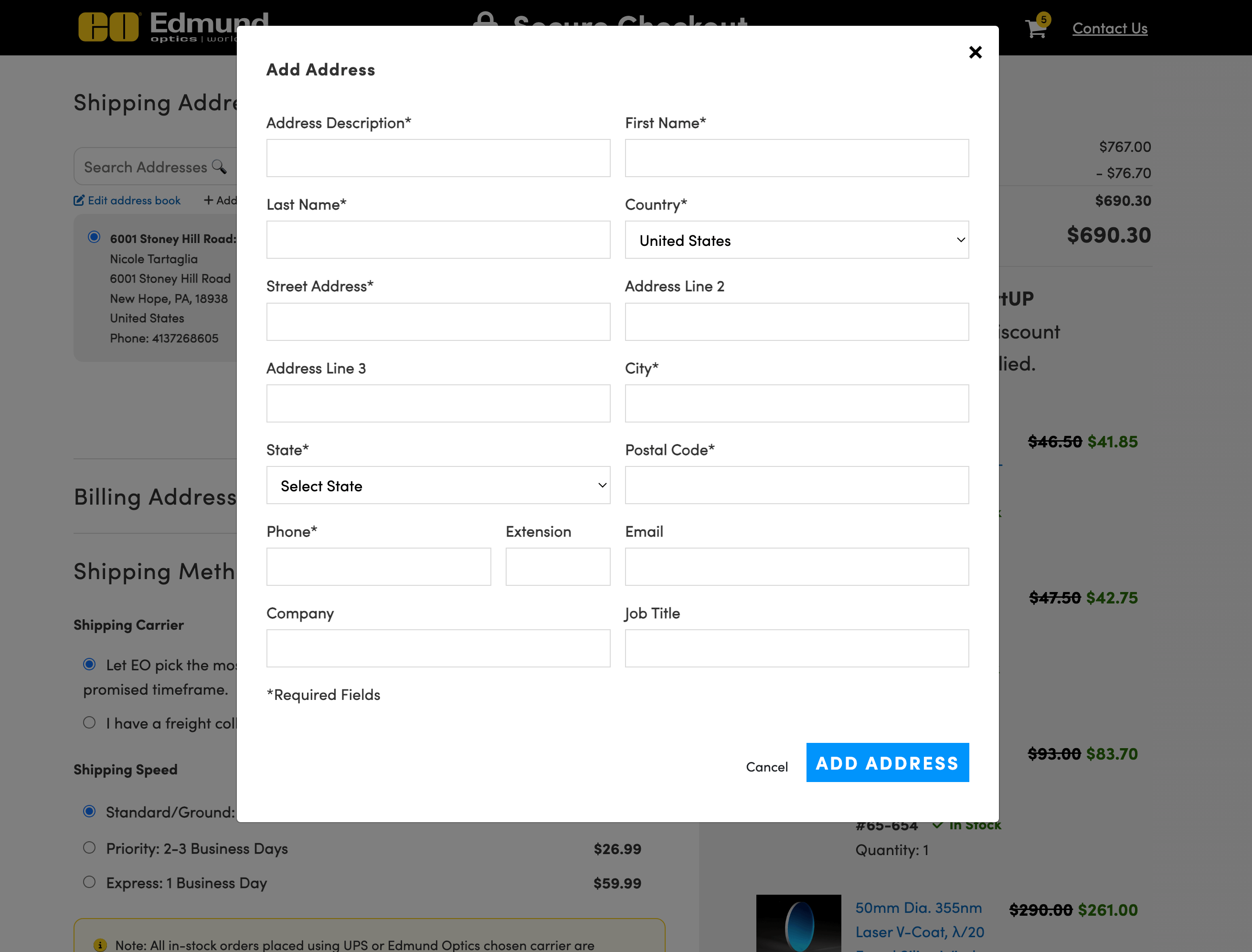
The old header used the word 'Product.' Changing it to 'Shop' helps customers understand that they can make purchases on the site. The old header used drop-down menus, which allowed for less content and product navigation. The new header provides the same experience on both mobile and desktop and can handle the full range of products within a single navigation. The old header had the login in the middle of the screen, but following standard design practices, we moved it along with the cart icon to the right. We also moved the search bar to the center of the screen, another standard practice across e-commerce platforms.
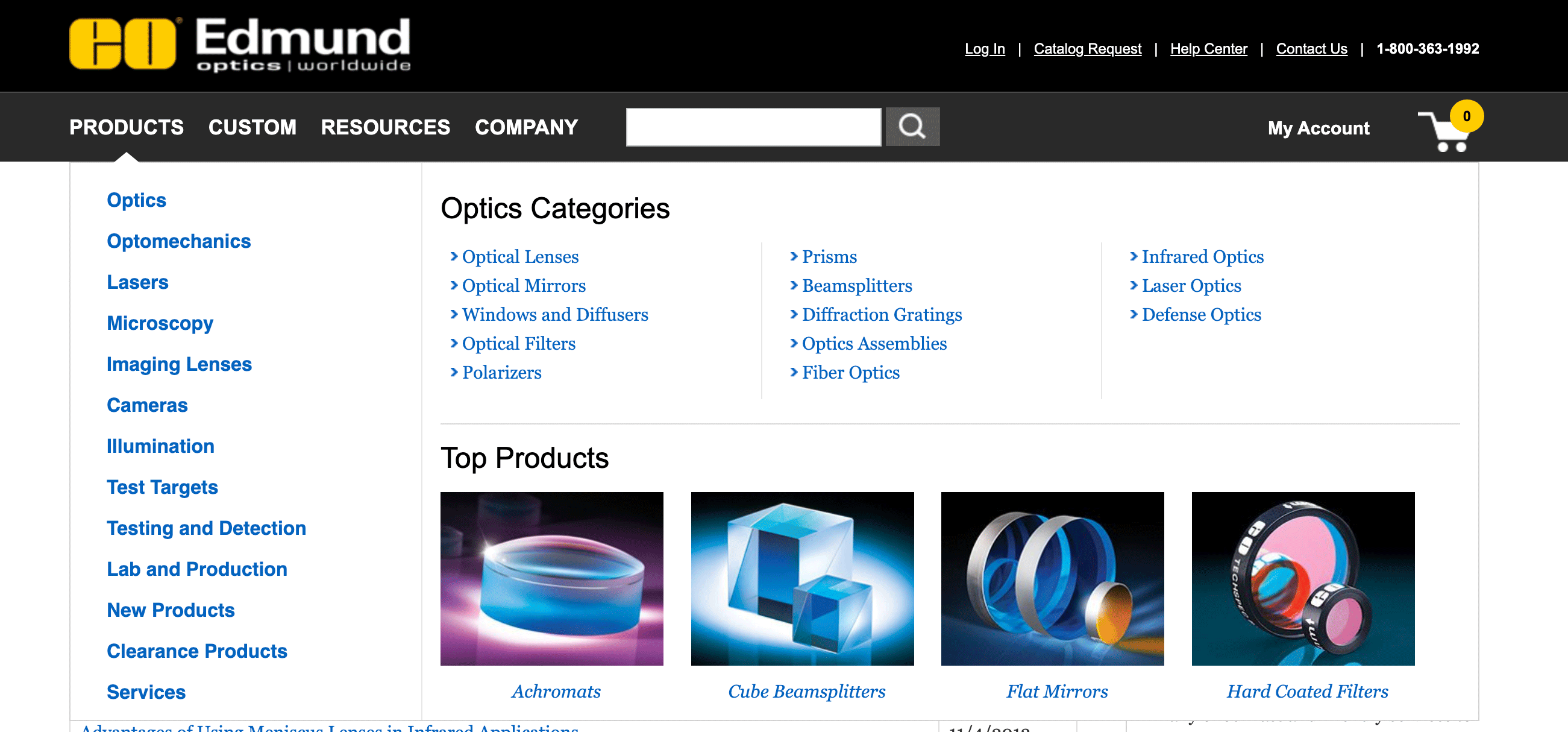



Promo codes were only used a few times a year, as Edmund Optics is a B2B company. However, in the cart, the promo code entry was prominent. Additionally, in reviewing customer usage videos, the 'Add by Stock No.' feature was used regularly. A change in the location of these two key items increased the usage of 'Add by Stock No.' and decreased dummy promo code entries.
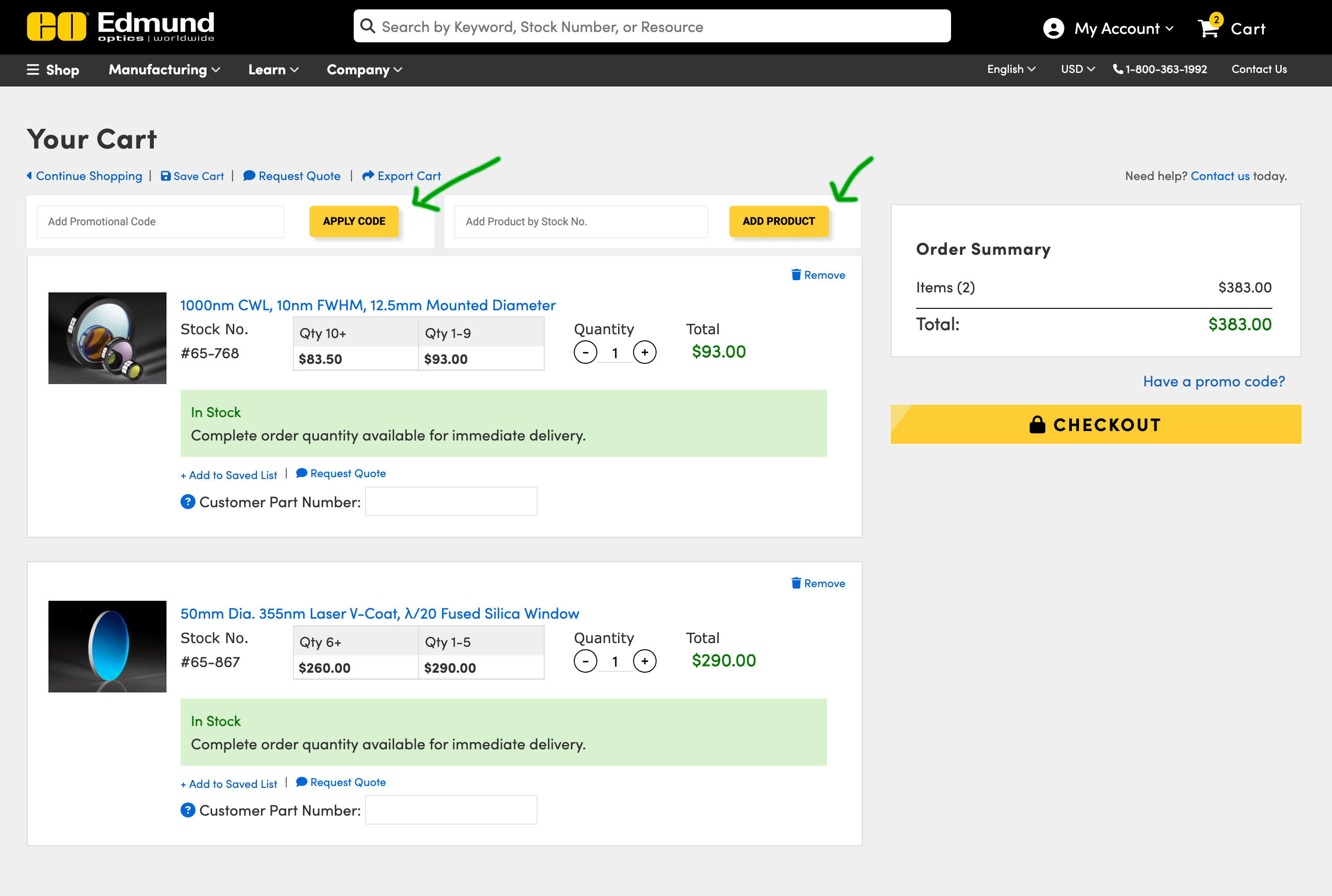
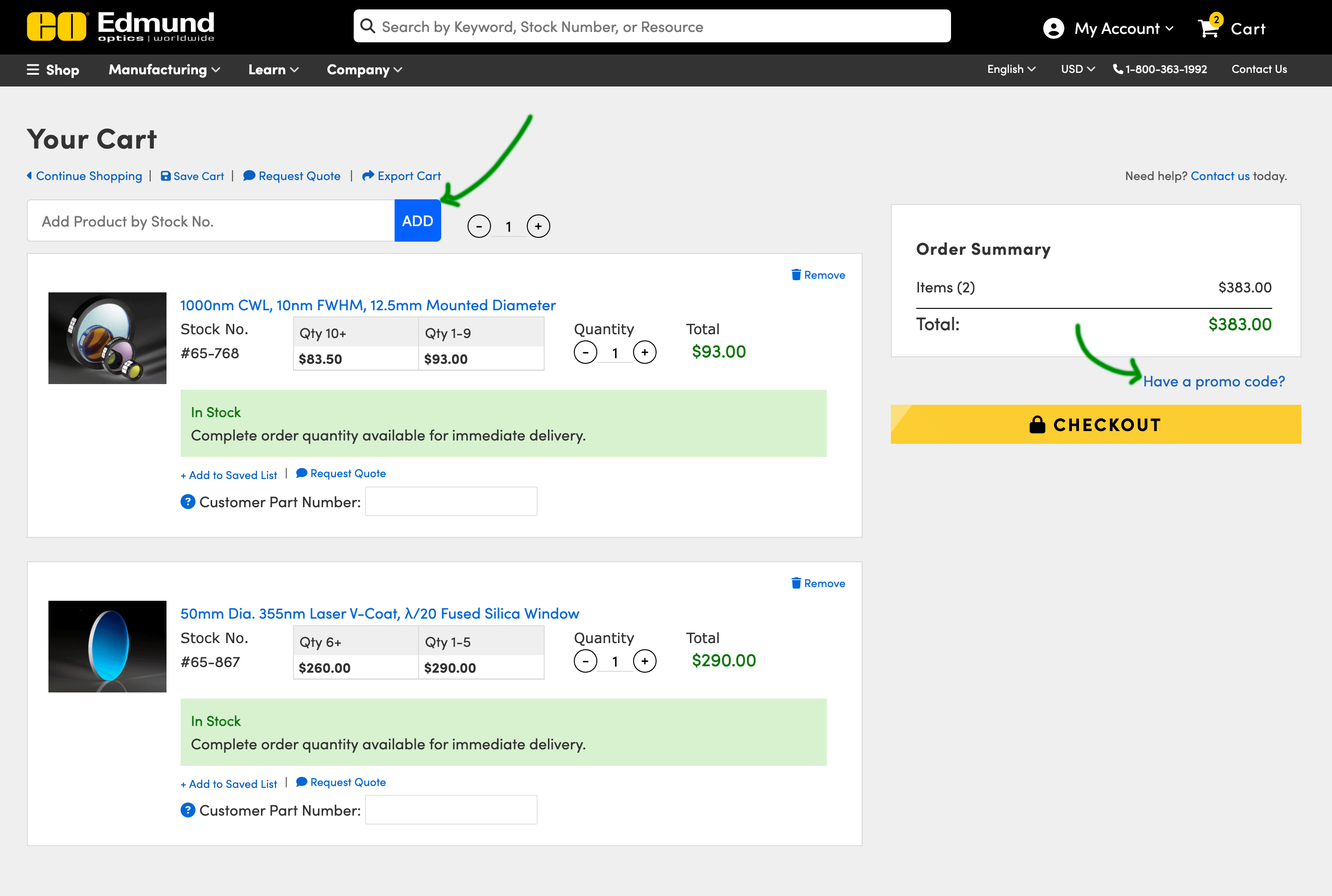
We noticed in scroll depth analysis and funnel checks that there were drop-offs at the bottom of the page. A review of the footer led to the addition of options for customers to navigate to once they reached the end of the page. The footer previously lacked contact information, and as users scroll to the bottom, it's important to offer them final menu options. We also added friendly employee photos to make customers feel more comfortable calling us, or they could continue to see a full selection of menu items to continue their journey.

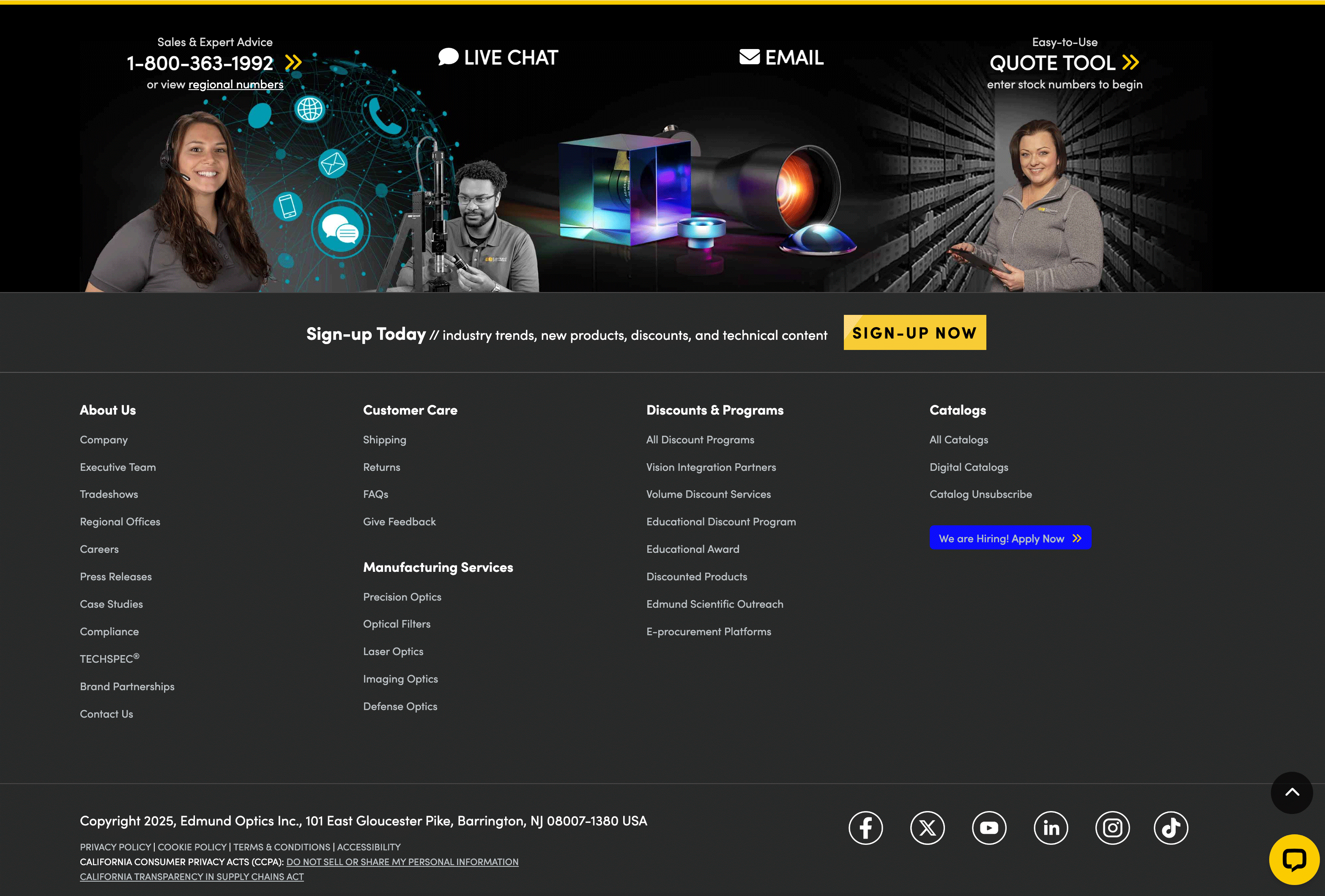
Safdar CPA had a website, but it was poorly designed and needed a refresh.







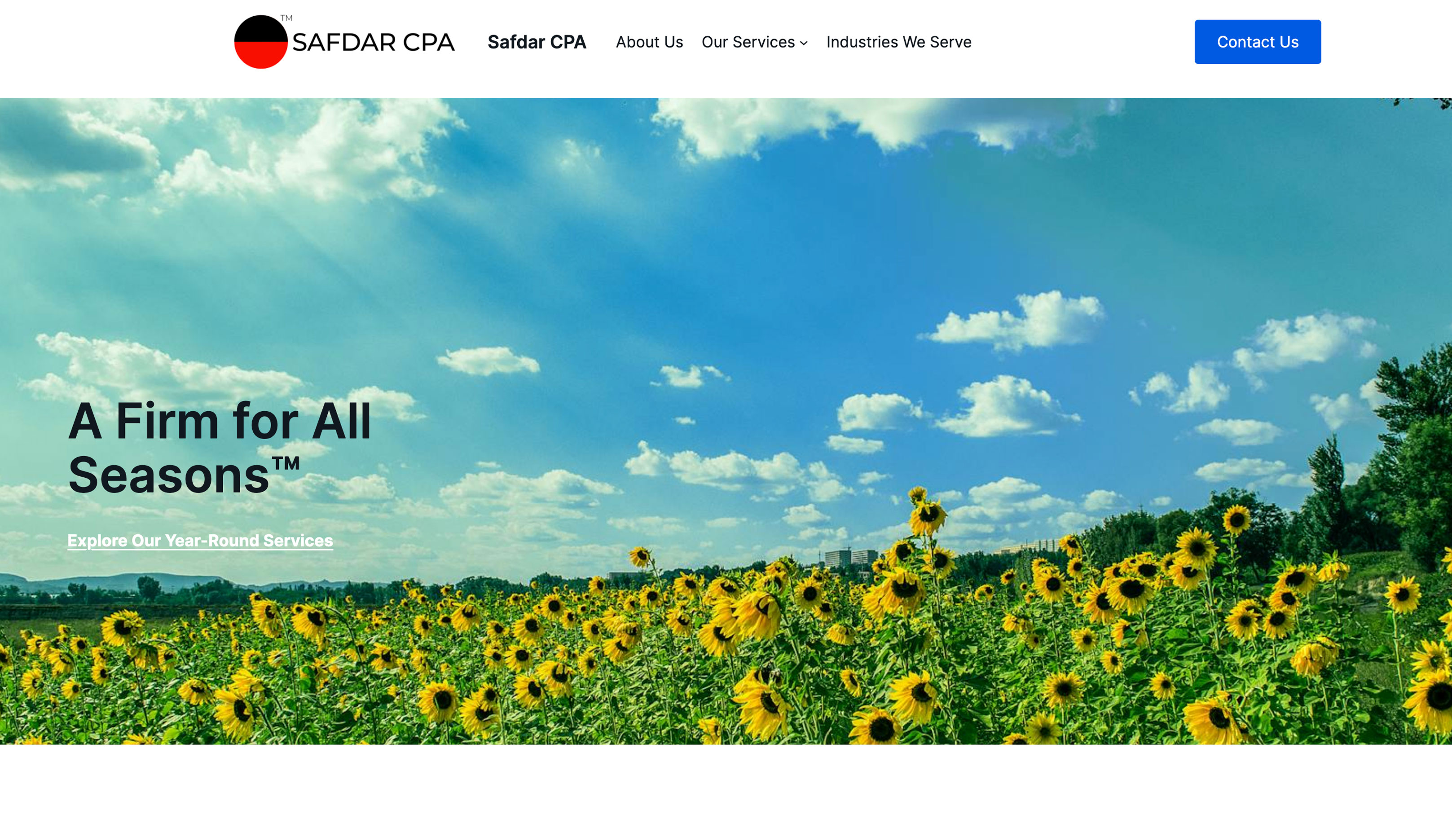
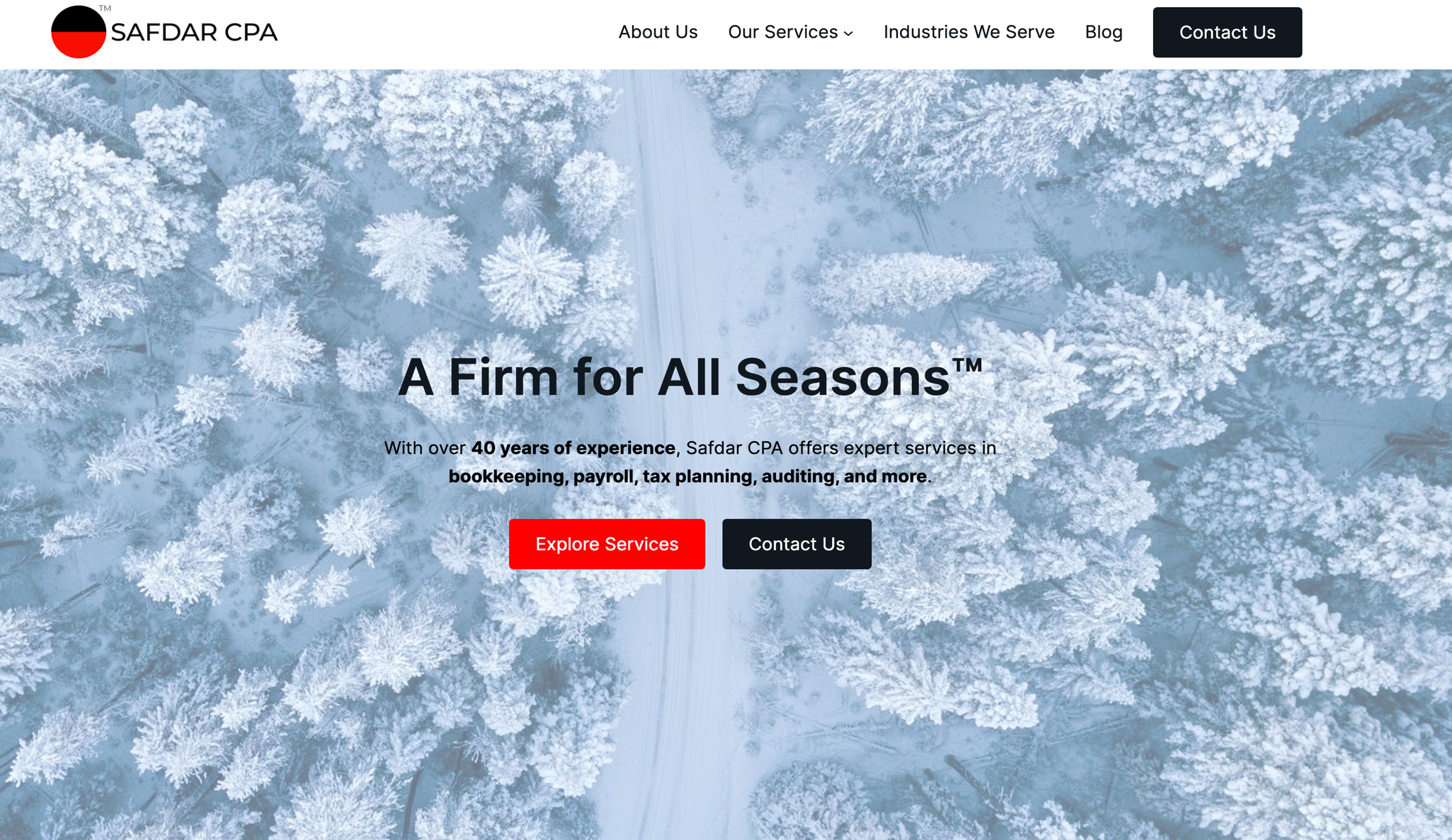

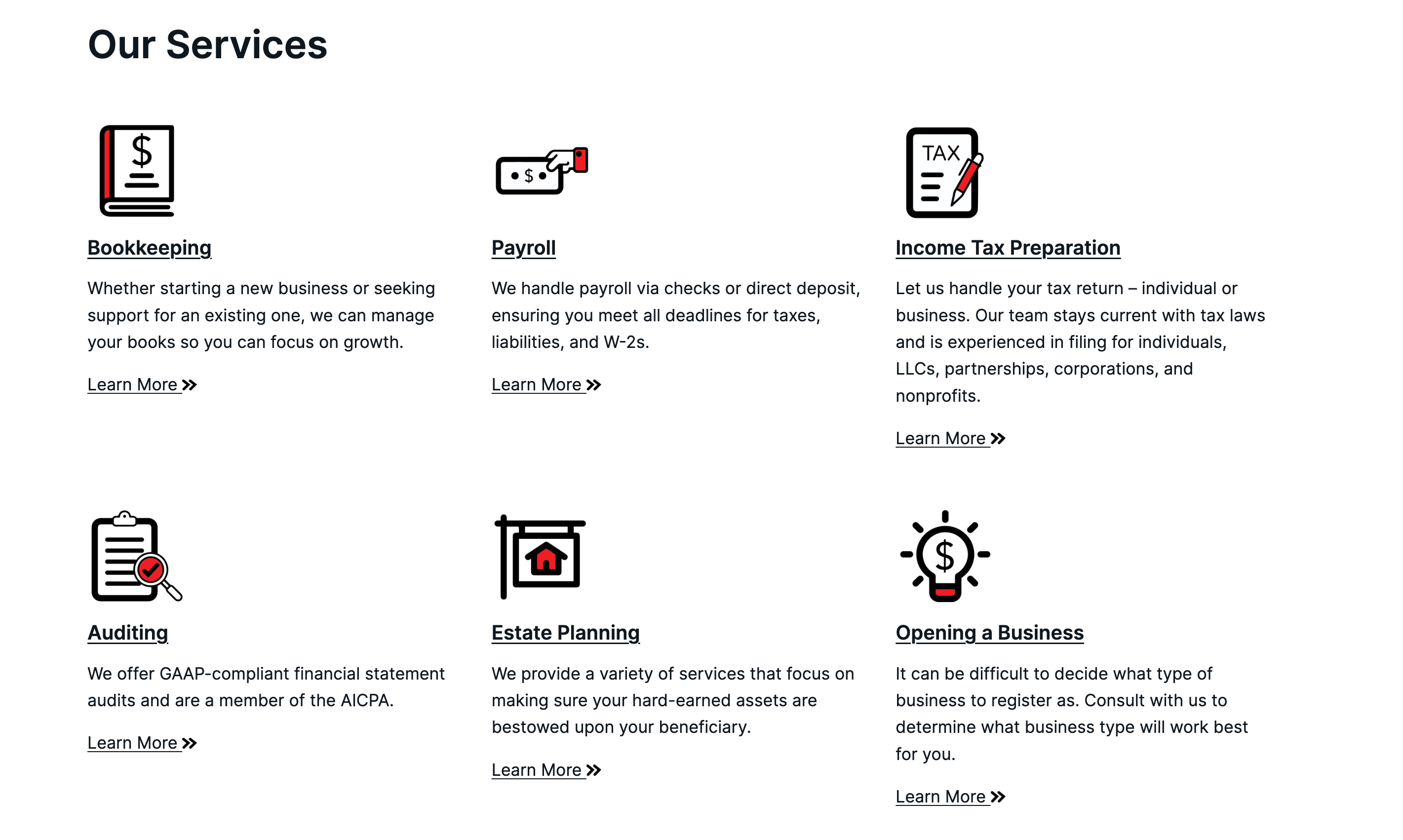
For this project, the client requested a logo for his housing appraisal company. He provided an inspiration photo of a contemporary, modern chair. This project was especially fun because, upon reviewing the photo, I had an 'aha' moment when I noticed that 'AiA' was already present, and it resembled a house! The client loved the idea.
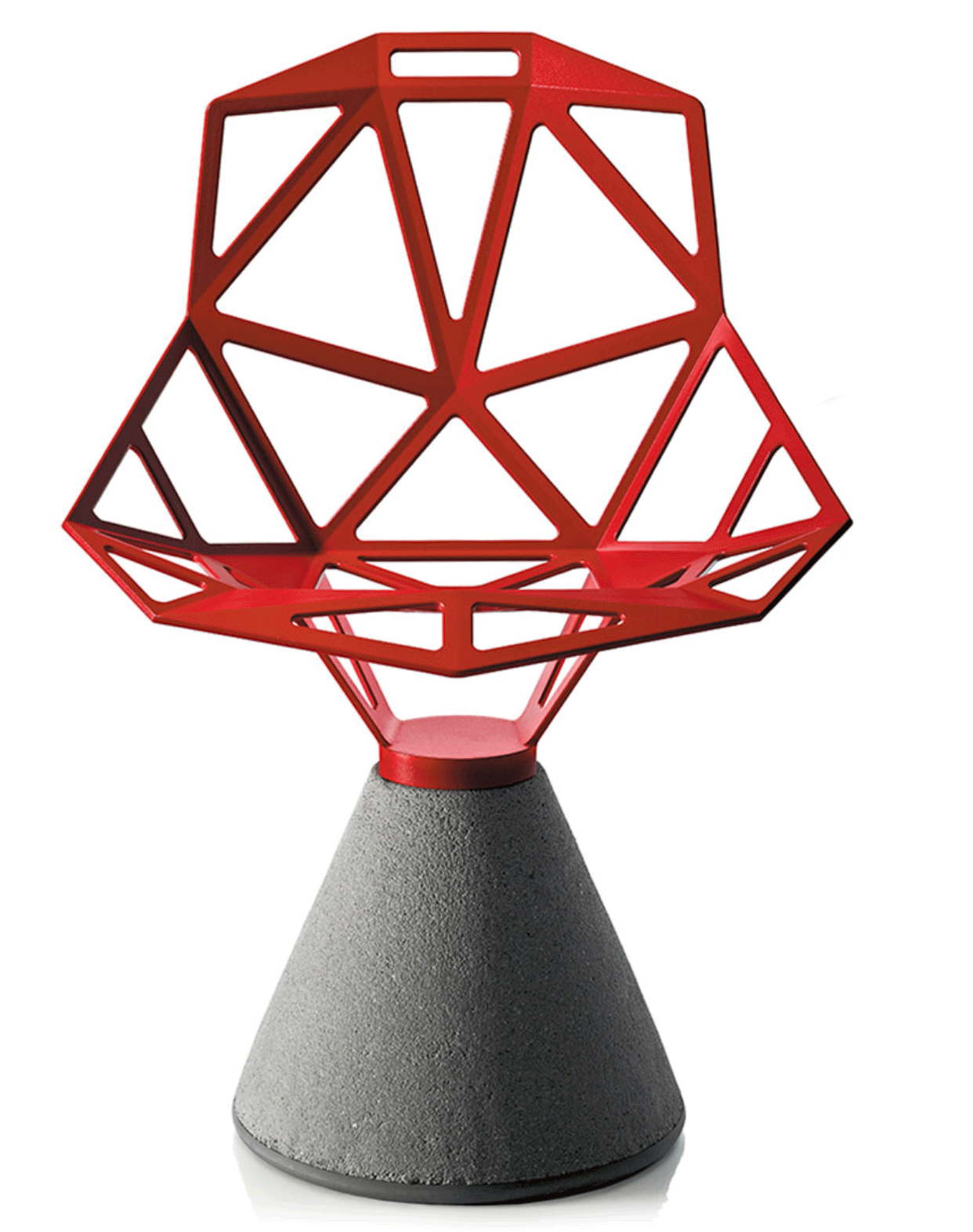
Photo inspiration from client.
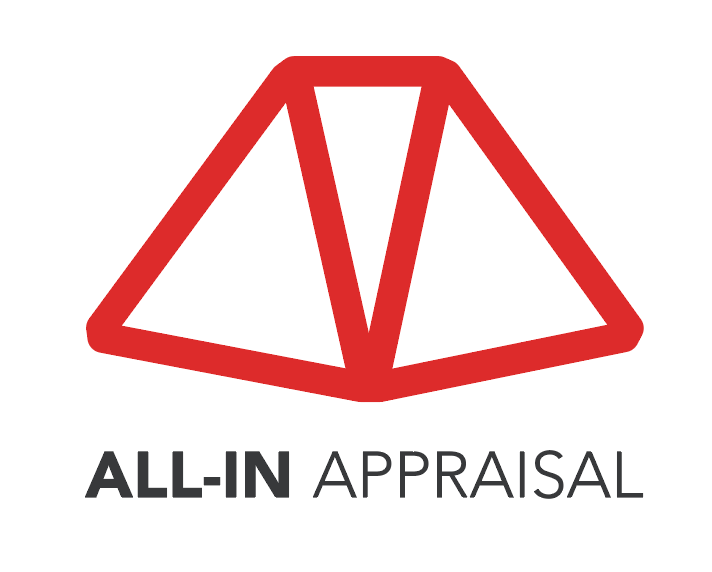
This is a doctor's website with gated membership products. I used Squarespace for the setup and also created the logo, design, and overall layout.
View Website
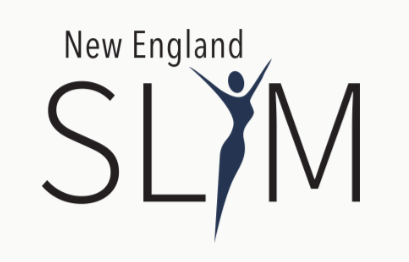
Nicole is an artist, designer, programmer, and creator with a passion for blending art, technology, and nature into immersive, human-centered experiences. She brings over a decade of experience across both the private and public sectors, using innovative technology to streamline processes and elevate digital engagement. Throughout her career, Nicole has held diverse roles—from Frontend programmer to UI/UX Design Manager—leading and mentoring creative teams while overseeing large-scale design and development initiatives, including a global e-commerce platform and internal applications serving millions of people. Her expertise spans responsive design, JavaScript, CSS, data analysis, and problem-solving, all grounded in a commitment to creating seamless, intuitive, and visually engaging digital experiences.
As the co-founder of 1886 River Road, an off-the-grid nature retreat, and the Creative Director at Satellite Gallery, Nicole designs spaces and experiences that inspire creativity and connection. Her work spans fine art, digital media, and large-scale installations, exploring the intersection of design, visual storytelling, and the natural world.
Nicole holds a BA in Graphic Design and Computer Science from Rutgers University, and her work has been exhibited in galleries and events across the country. When not creating, Nicole lives in New Hope, PA, with her husband (Joe), two children, and three cats all of whom influence and inspire her creative journey.